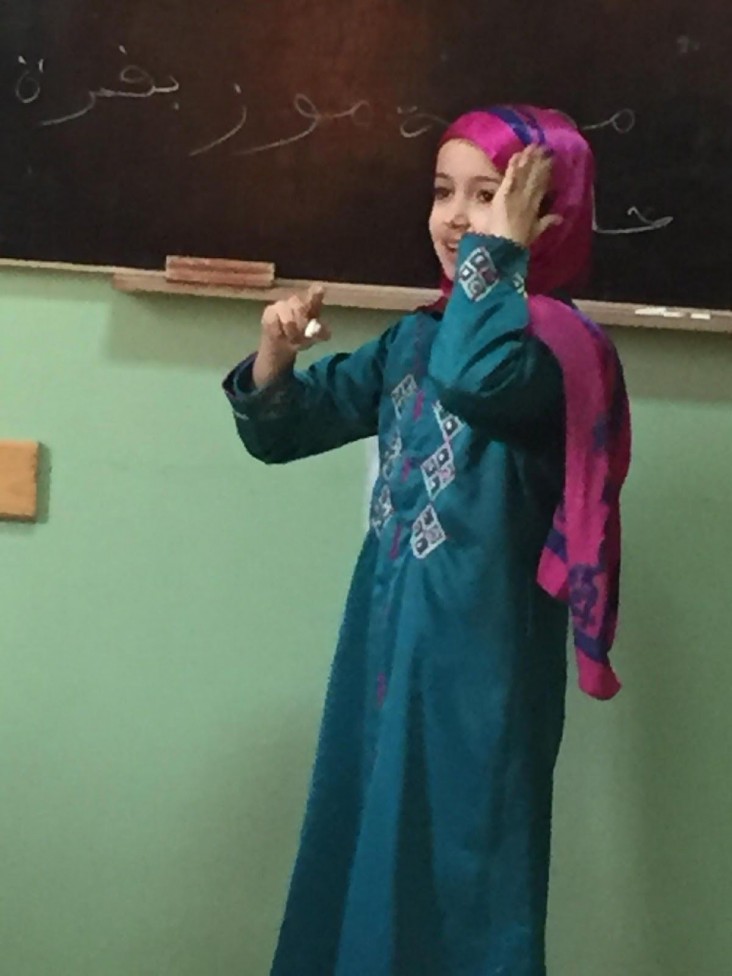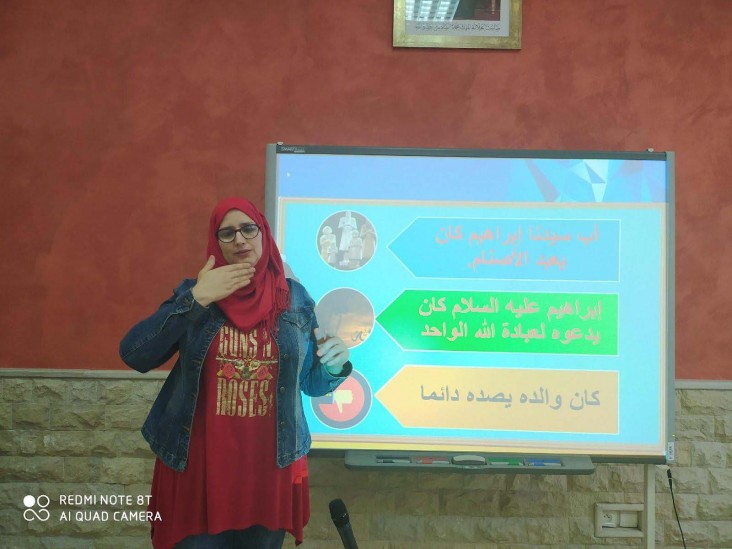Speeches Shim

“When COVID-19 hit Morocco and the schools closed, we quickly shifted to distance learning with the main goal of providing continued learning for our students”, said Mr. Boukili, the inclusive education official at the Curricula Directorate of Morocco’s Ministry of Education. “We soon realized that there is yet a significant amount of efforts required to meet the needs of distance learning for our deaf students!”
On March 16, 2020, Morocco’s Ministry of National education, Vocational Training and Scientific Research (MOE) shifted to digital learning to ensure the continuity of learning for its seven million students in response to the coronavirus outbreak. A variety of distance learning resources were made available for the students. The Ministry quickly multiplied its efforts to make distance learning accessible to all. The Ministry expanded its online TilmideTICE and TaalimTICE platforms which provide content across all subjects and levels, distributed tablets with free internet access to guarantee access to the Ministry platform for students in remote areas, rolled out a Microsoft Teams platform to enable student-teacher online interaction, and launched virtual classrooms to benefit vocational training center students. Then, to reach students with no access to the internet, often in rural or underserved regions, the Ministry went a step further and started filming lessons and broadcasting them on national TV channels to ensure equitable access to all.
To all? Not quite. As these distance learning tools were rolled out, concerns were soon raised that deaf and hard of hearing (DHH) students, representing over 2,000 schooled children and youth who
count among 10,000 of Morocco’s students with sensory impairments, were being left behind.
There remained yet another challenge: the need to translate distance learning materials into Moroccan Sign Language (MSL) for primary school students.
The Ministry was well prepared to rise to the challenge thanks to the USAID project Improving Deaf Children’s Reading through Technology activity (2015 - 2018) which, in partnership with the MOE, has increased recognition of MSL as a language by providing training to teachers and administrators on MSL and by improving the availability and quality of reading material and teacher resources adapted for DHH students.

Ms. Mina Daoudi, a teacher and sign language interpreter, was one of the teacher volunteers that the MOE called upon to help with the translation of lessons in MSL through a series of recorded videos. “These video lessons will be first broadcast on national TV channels then posted on the Ministry’s online platform so that deaf and hard of hearing students can access digital learning opportunities.” Ms. Daoudi said. “You know,” she continued, “there are many educational materials for deaf children online, but in addition to being scattered here and there, they are not Morocco context-appropriate and do not incorporate the Ministry of Education's pedagogical vision. This is the time we should consider providing our own offerings!”
Driven by the immediate need and response to the pandemic,
the MOE and USAID are partnering to adapt digital lessons into sign language for DHH students, under their current National Program for Reading (2017-2022)
This effort is part of a continuing collaboration with the MOE to support DHH education. The need for MSL teacher-preparation programs that improve the skills and competencies of MSL teachers resulted in the signature of a Memorandum of Understanding (MOU) in June 2019 between the MOE, Lalla Asmaa Foundation and USAID. This MOU outlines the implementation of a comprehensive and evidence-based teacher training program that will provide the teachers of DHH students with quality educational resources required for teaching DHH students.
“This shortage in trained teachers for deaf and hard of hearing students has been all the more acute with the COVID-19 pandemic as we are trying to provide online interpretation services for our deaf and hard of hearing students”, said M. Boukili. “But this MOU will significantly contribute to raising the profile of sign language teachers in Morocco and hopefully will encourage more and more undergraduate students to specialize in deaf education and fill the MSL teacher shortage gap”, he continued. “It is a huge step towards achieving Morocco’s inclusive education reform agenda for the long term and a strong commitment to contributing to an inclusive and sustainable economic growth of the country.”

Comment
Make a general inquiry or suggest an improvement.